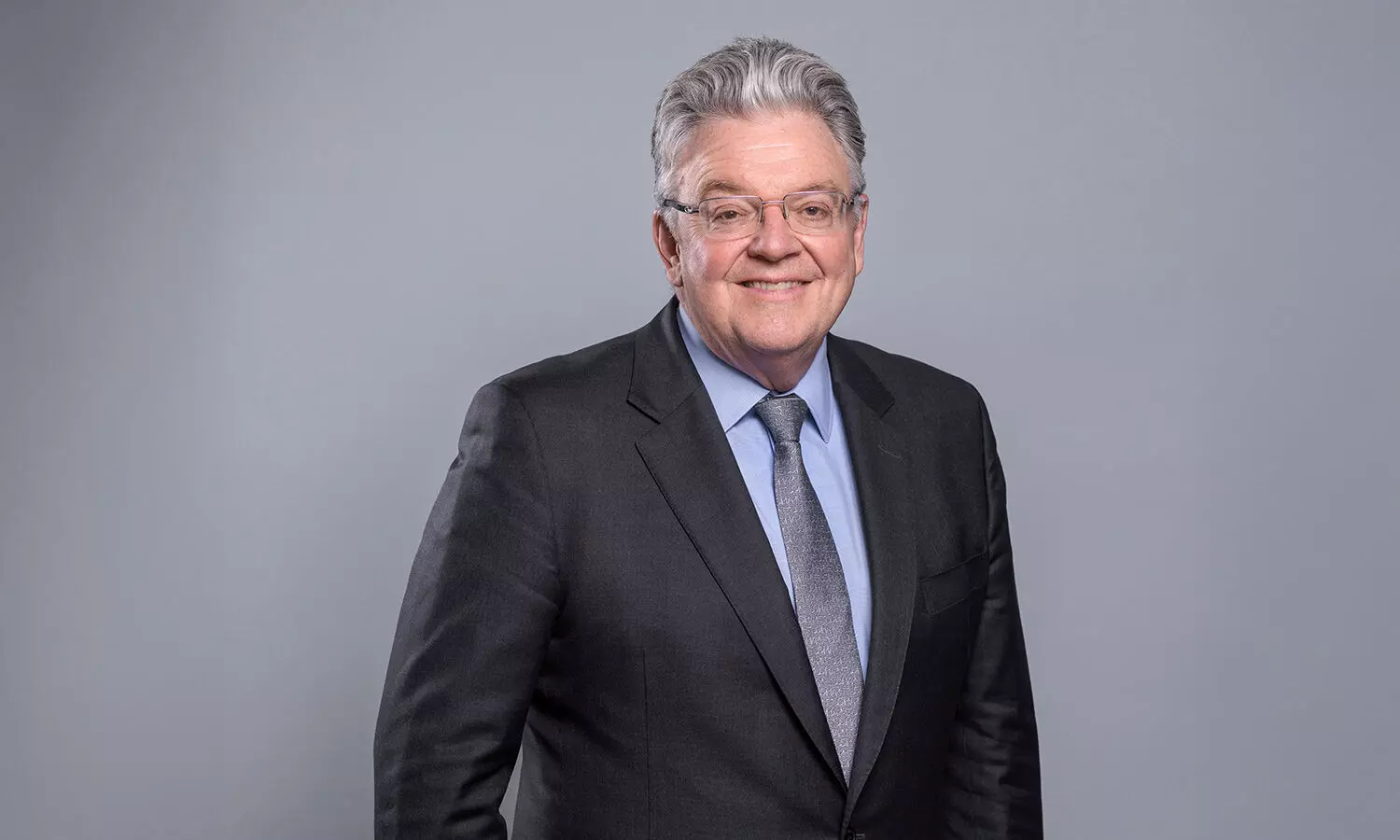
Global trade holds firm amid tariffs, says DHL’s John Pearson
For Pearson and DHL, the path forward lies not in retreat but in adaptation to new trade dynamics that continue to define the global economy.

The newly released DHL Global Connectedness Tracker 2025 Special Update, produced in partnership with New York University’s Stern School of Business, underscores a clear trend: global trade is proving resilient despite policy headwinds and tariff tensions.
The report analyses over 20 million data points spanning trade, capital, information, and people flows, revealing that international commerce remains robust even as geopolitical frictions intensify. In an exclusive interview with The STAT Trade Times, John Pearson, CEO of DHL Express, emphasised that the world’s appetite for doing business across borders continues to outweigh political and economic disruptions.
Source: DHL Global Connectedness Tracker
Pearson highlighted that global trade in the first half of 2025 grew faster than in any comparable period since 2010, barring the immediate post-pandemic rebound. “Most people might have thought that trade would be down,” he said. “That surprised a lot of people.”
According to Pearson, the performance demonstrates how globalisation and trade connections have sustained momentum. The report also points to the rise of Sub-Saharan Africa, which recorded a trade value growth of more than 10 per cent in the first half of the year. Pearson noted that intra-regional trade in Africa is advancing, suggesting that the African Continental Free Trade Area (AfCFTA) is starting to show results.
DHL’s confidence in Africa’s trade momentum was reflected soon after, with the company announcing a €300 million investment plan in Sub-Saharan Africa on October 15, 2025. The multi-year initiative spans DHL Express, DHL Global Forwarding, and DHL Supply Chain, aiming to expand infrastructure, enhance service capabilities, and strengthen the region’s integration with global markets.
The investment supports the AfCFTA’s goal of deepening intra-African commerce and advancing the continent’s role in international value chains. The decision came as the Global Connectedness Tracker reported that Sub-Saharan Africa led all regions in the first half of 2025 with a 10 per cent rise in trade value, underscoring its growing significance in global trade.
The report also identifies that global trade is projected to grow at roughly the same rate over the next five years as it did in the past decade, with an expected 2.5 percent annualised growth rate through 2029.
Pearson acknowledged the weakening ties between China and the United States—U.S. imports from China have fallen to about 9 per cent from 22 per cent in 2017—but urged observers to focus on the broader picture. “I would rather focus on the 219 countries that are embracing trade,” he said. “That is absolutely what is happening out there.”
Pearson addressed the growing discourse around regionalisation and nearshoring, noting that such trends are often overstated. “There’s a little bit of faddism and lots of buzzwords that mean something but maybe don’t mean very much,” he said. Drawing a historical comparison, he recalled the Icelandic volcanic ash crisis and the pandemic, when many predicted a major geographic reorganisation of supply chains.
“What actually happened? Not very much,” he reminded. The average distance that traded goods travel reached a new record of about 5,000 kilometres during the first half of 2025, marking a continuation of the long-distance trade trend that defies predictions of increased regionalisation.
The share of trade occurring within major world regions fell to a record low of 51%. This shows that globalisation remains the defining characteristic of trade flows, with companies continuing to connect markets across great distances rather than concentrating trade within geographic blocs.
On the widespread discussion around de-risking supply chains, Pearson acknowledged that companies are indeed diversifying production. He characterised this trend as “separate but linked” to nearshoring and more focused on ensuring reliability than reversing globalisation.
“All companies who had any degree of supply chain interruption will want to de-risk their supply chains,” he said. According to him, this often involves adding a production site in Asia or moving certain components closer to consumption markets. Pearson cited DHL’s pandemic performance as an example of logistical strength, stating, “We moved 4 billion vaccines at a success rate of over 99 percent.” The experience, he added, affirmed the industry’s capacity to maintain resilience even under pressure.
Revisiting the pandemic, Pearson said the crisis redefined expectations from logistics providers. He remembered an instance when a customer instructed, “I want everything up to 500 kilos to move by DHL Express. I don’t care what.” For Pearson, such moments illustrate how companies depend on rapid, reliable logistics to de-risk their operations. The pandemic became not only a stress test for global supply networks but also validation for express logistics as a lifeline to global commerce.
Pearson explained that DHL continuously realigns and redesigns its services to address disruptions, pointing to the firm’s extensive network encompassing 220 countries, 320 aircraft, 400 facilities, and 100,000 vehicles.
“Every one of those aircraft can be moved at the click of a mouse,” he said. The company redistributes its capacity as trade flows shift. “When one region slows down, we move capacity to where there’s growth,” he explained. According to Pearson, such realignment is a continuous process rather than a crisis-driven reaction, enabled by DHL’s ownership of its aircraft and infrastructure. It allows what he called “complete control over flexibility”.
Source: DHL Global Connectedness Tracker
Looking ahead, Pearson expressed confidence in the sustainability of current trade growth. “Trade has proven to be resilient. Every time the world says, ‘This is the end of globalisation,’ it bounces back stronger,” he said.
He described artificial intelligence and automation as factors that will strengthen logistics rather than replace it, citing DHL’s adoption of AI for route optimisation, customs processes, and carbon tracking. Sustainability has become integral to DHL’s strategy, with a commitment to net-zero emissions by 2050 through investments in electric vehicles and sustainable aviation fuels. In Pearson’s view, both technology and sustainability serve as “tailwinds for trade and logistics”.
Pearson noted that a key message of the DHL Global Connectedness Tracker 2025 is “Globalisation is alive and well.” He affirmed that despite tariffs and political divisions, the world remains highly interconnected. The data, he emphasised, do not support the notion of de-globalisation. “Companies that stay open to trade, that collaborate internationally, that use logistics strategically—they will thrive,” he said.
The DHL Global Connectedness Index currently registers at about 25% on a scale where 0% means no cross-border flows and 100% indicates a fully globalised state without border or distance limitations.
While this reveals that globalisation has advanced, the global economy remains largely segmented with considerable room for deeper integration. Information flows are the most globalised, propelled by digitisation advances, followed by capital and trade. People flows, though rebounding post-pandemic, remain the least globalised.
Pearson shared examples of DHL's agility in responding to evolving trade patterns. For example, the sudden shift of laptop production from China to Vietnam required swift redeployment of air freight capacity, illustrating DHL’s real-time operational flexibility in adapting to changing global trade hotspots.
Capital investments at DHL remain focused on people, quality, and growth, particularly in essential infrastructure and technology upgrades to support critical sectors like life sciences, healthcare, energy, and industrial projects, especially in regions such as Sub-Saharan Africa. These strategic investments align with local trade dynamics and customer needs, ensuring DHL remains the preferred logistics partner.
The interview also underscored the significance of Southeast Asia as a vibrant trade region. The Association of Southeast Asian Nations (ASEAN), the longest-standing trade bloc, continues to foster dynamic intra-regional trade. India emerged as a key growth opportunity, thanks to its economic reforms, increasing foreign direct investment, and improving logistics infrastructure.
Pearson noted that DHL’s €500 million investment between 2024 and 2030 in the Middle East underscores the company’s commitment to supporting the region’s economic growth and transformation into a key catalyst for regional and global trade. He emphasised investments across all DHL divisions—Express, Global Forwarding, Supply Chain, and eCommerce—focused on enhancing infrastructure, expanding networks, increasing capacity, and elevating service capabilities.
He also highlighted the growing e-commerce sector in the Middle East, which is opening opportunities for entrepreneurs and businesses to expand globally. DHL’s investments target sectors such as energy, life sciences, healthcare, and technology, with tailored solutions to build supply chain resilience amid global uncertainty.
Pearson encapsulated DHL’s enduring growth philosophy in the equation “people plus quality equals growth”, emphasising operational excellence, sustainability commitments, and a supportive workplace culture as foundational pillars against the challenges of global logistics.
For Pearson and DHL, the path forward lies not in retreat but in adaptation to new trade dynamics that continue to define the global economy.

